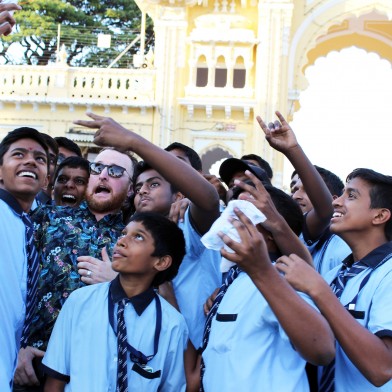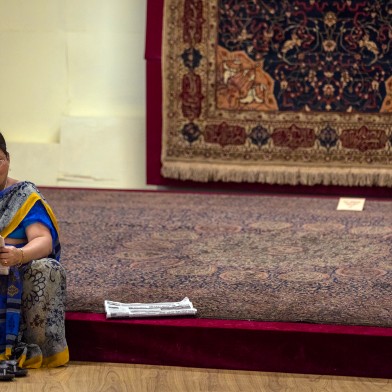On April 11, India will go to the polls, kicking off the world's biggest democratic event.
Here are some key statistics to help wrap your head around the sheer scale of the 2019 Indian general election.
900 million eligible voters
India is the world's largest democracy, and 900 million will have the opportunity to vote for 428 seats in the lower house of parliament, or Lok Sabha. Voters will choose from almost 2,300 political parties, including the ruling Bharatiya Janata Party (BJP) led by Prime Minister Narendra Modi. In 2014, BJP won 282 seats in a landslide against the opposition Congress party, which only managed to win 44 seats. This year, the race is set to be more competitive.
560 million online
The number of people connected to the internet has risen dramatically. With India becoming the largest market for Facebook and WhatsApp, social media has been a major force in election campaigning. PM Modi alone has 46 million Twitter followers. Election authorities have pledged to scrutinise social media due to concerns over the influence of big platforms and the potential to spread fake or misleading information.
84 million first-time voters
84 million will head to the polls for the first time, with 15 million in the 18-19 years age group. Around two-thirds of India's population is under the age of 35. Among the issues that young voters will be paying attention to is a concern over religious intolerance and the conservative Hindu nationalism of the BJP. In some places, however, enrolment of young voters is low enough that authorities have launched awareness campaigns to get them to register.
1.8 per cent gender gap
The gender gap in voting has shrunk in recent elections — in 2014, women's turnout was 65.3 per cent, versus 67.1 per cent for men. With even higher turnout expected this year, parties are starting to pay attention to the ways in which women's votes will influence results. Yet the number of MPs in both houses of parliament remains low at just over 11 per cent. There is also the challenge of 21 million missing women from the electoral registry.
7 phases, 5 weeks
The election will take place in seven phases over two months. Voting will take place on April 11, 18, 23 and 29, and on May 6, 12 and 19. The ballots will finally be counted on May 23. The reason for the phasing is the sheer enormity of the process — there are 543 constituencies. After the dates were announced, Twitter users in India speculated about the motives behind the schedule.
$7 billion
The entire election is estimated to cost US$7 billion. It will be the most expensive in India's history, and likely the world. To compare, the 2016 United States election cost around US$6.5 billion.
Main image by arihant daga on Unsplash
- Asia Media Centre


